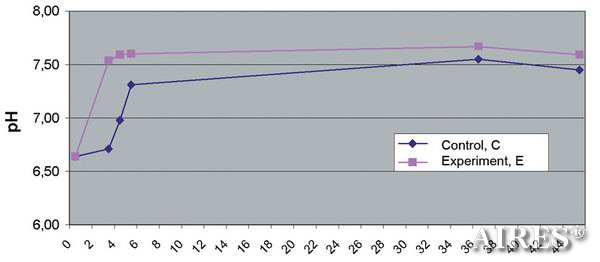 Water is the most interesting substance on the planet. The uniqueness water lies primarily in the fact that only its inherent properties are in many anomalies. Nearly all of water’s physical and chemical properties are exceptions in nature, and only thanks to these anomalies of water is it possible for life to exist on our planet.
Water is the most interesting substance on the planet. The uniqueness water lies primarily in the fact that only its inherent properties are in many anomalies. Nearly all of water’s physical and chemical properties are exceptions in nature, and only thanks to these anomalies of water is it possible for life to exist on our planet.
You could say that all living things are made up of water and organic matter. On average, plants and animals consist of more than 50% water. The human body is approximately 65% water (a newborn is up to 75% water).
 Water’s most important property is its ability to preserve changes to its own structure over time, e.g. “water’s memory.” The role of the structural state of the aqueous environment in the life of organisms is well known. For living and non-living systems that contain water, the phenomenon of aqua-communication has been detected. This means that water senses, saves, and sends information thanks to its ability to structure as clusters which encode incoming information. The difference in the duration of life of water clusters provides water and water-based systems both short- and long-term memory. The basis of water’s memory is its ability to save structural and informational properties over time. The mobility of molecular dipoles in clusters leads to the occurrence of electromagnetic radiation, which has been modulated by information encoded in the structure of the clusters.
Water’s most important property is its ability to preserve changes to its own structure over time, e.g. “water’s memory.” The role of the structural state of the aqueous environment in the life of organisms is well known. For living and non-living systems that contain water, the phenomenon of aqua-communication has been detected. This means that water senses, saves, and sends information thanks to its ability to structure as clusters which encode incoming information. The difference in the duration of life of water clusters provides water and water-based systems both short- and long-term memory. The basis of water’s memory is its ability to save structural and informational properties over time. The mobility of molecular dipoles in clusters leads to the occurrence of electromagnetic radiation, which has been modulated by information encoded in the structure of the clusters.
Thus, water’s structural and informational feature is the ability of its molecules to form clusters whose structure encodes information about interactions with the external environment.
A philosophical and procedural analysis of the discovery of informational and phase state of material systems, accounting for the latest natural-science conceptions in physics, chemistry, and biology, prove that the modern scientific map of the world represents our existence as an information-controlled material world, which based on its structure makes it possible to realize its infinite knowledge to any rational being who has attained the appropriate level of development, i.e. who is aware of his or her connection to the unified information field of material systems.
|
|
|
|
|
|
|
|
|
|
|
|
|
|
|
|
|
|
|
|
|
|
|
|
|
|
|
Biologically active water has long exhibited a healing and therapeutic effect. The following are forms of biologically active water: thawed water, “living and dead” water, silver water, baptismal water, etc.
Experiments conducted over the course of several years have shown that the Aires Microprocessor coherent transformer effectively changes the physical and chemical properties of water, restructuring it own electromagnetic field.
The human body is known to be more than 62% water – water that participates in all biological reactions. Therefore, the quality of water serves as a determining parameter for synthesizing the suitable bio-molecular bonds necessary to sustain human life.
Water is an open, dynamic, structurally complex system in which the stationary state is easily disrupted given any external influence, which results in a transitional state in the system, which is characterized by change, most of all, in structural and informational properties.
Water clusters are inter-molecular associates of water that have a specific structure. They cause the stability of any molecular bonds that are formed based on water.
To stabilize the structural integrity of the body, the structural and informational state of inter-cellular water must be corrected by eliminating clusters that have pathogenic properties. The application of special water-processing technology using Aires coherent transformers eliminates pathogenic nature of clusters by changing their structural and informational state. The Aires microprocessor is a device that protects water from the pathological influence of physical fields and promotes the favorable structuring of drinking water. Moreover, the pH balance of an aqueous environment can be changed by obtaining a stable correlation of the of the water’s pH value from a change in the characteristics of the electromagnetic field of the external environment.
 Time (days)
Time (days)
Chance in the pH value of water in the presence of an Aires coherent transformer
(Control, C – without the Aires microprocessor, Experiment, E – with the Aires microprocessor)

















